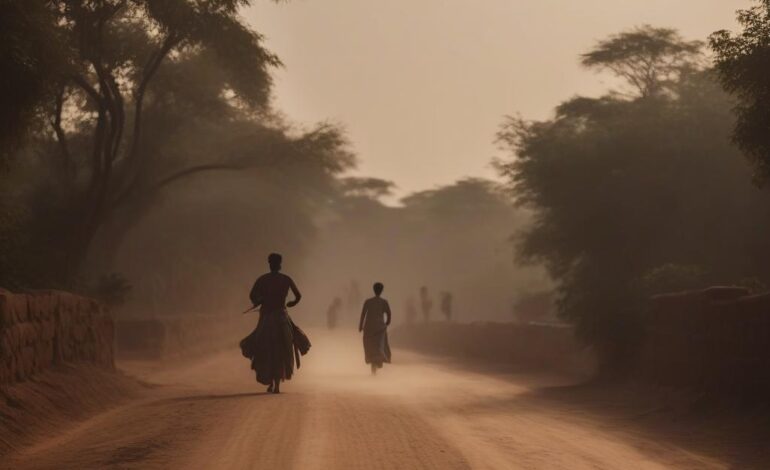India as a Mega Diversity Nation

-
Table of Contents
- India as a Mega Diversity Nation
- The Cultural Tapestry of India
- Biodiversity and Ecological Wealth
- Challenges and Opportunities
- Conclusion
- Q&A
- 1. What makes India a mega diversity nation?
- 2. How many languages are spoken in India?
- 3. What are some of the major religions in India?
- 4. What are some of the biodiversity hotspots in India?
- 5. What are the challenges India faces in managing its diversity?
- 6. How does India promote sustainable tourism and conservation?
- 7. What are some examples of India’s cultural contributions?
- 8. How can India continue to thrive as a mega diversity nation?
India, a land of rich cultural heritage and diverse traditions, is often referred to as a “mega diversity nation.” With its vast geographical expanse and a population of over 1.3 billion people, India is home to a remarkable variety of languages, religions, ethnicities, and ecosystems. This article explores the unique aspects of India’s diversity, highlighting its significance and the challenges it presents.
The Cultural Tapestry of India
India is a melting pot of cultures, with each region having its distinct traditions, languages, and customs. The country is divided into 28 states and 8 union territories, each with its own official language and cultural identity. Hindi, the most widely spoken language, is recognized as the official language of the Indian government. However, there are 21 other officially recognized languages, including Bengali, Telugu, Marathi, Tamil, Urdu, and Gujarati, to name a few.
The diversity of languages in India reflects the country’s rich linguistic heritage. According to the 2011 Census, there are 1,369 distinct languages spoken in India, making it one of the most linguistically diverse countries in the world. This linguistic diversity is a testament to the country’s long history and the coexistence of various ethnic groups.
Religion also plays a significant role in shaping India’s cultural landscape. India is the birthplace of several major religions, including Hinduism, Buddhism, Jainism, and Sikhism. Hinduism, the largest religion in India, is followed by approximately 79.8% of the population. Islam, Christianity, and other religions also have significant followings in the country.
Biodiversity and Ecological Wealth
India’s diversity extends beyond its cultural aspects to its natural ecosystems. The country is home to a wide range of landscapes, from the snow-capped Himalayas in the north to the coastal plains in the south. This geographical diversity has resulted in a remarkable variety of flora and fauna.
India is one of the world’s 17 mega-diverse countries, harboring approximately 7-8% of the world’s recorded species. The country boasts several biodiversity hotspots, including the Western Ghats and the Eastern Himalayas, which are recognized for their high levels of species endemism. These regions are home to numerous endemic plant and animal species found nowhere else on Earth.
India’s rich biodiversity is evident in its national parks and wildlife sanctuaries. The country has over 100 national parks and more than 500 wildlife sanctuaries, providing protection to endangered species such as the Bengal tiger, Indian rhinoceros, Asiatic lion, and Asian elephant. These protected areas not only conserve India’s natural heritage but also contribute to the country’s tourism industry.
Challenges and Opportunities
While India’s diversity is undoubtedly a source of pride, it also presents several challenges. The coexistence of multiple languages, religions, and ethnicities can sometimes lead to social and cultural tensions. Ensuring harmony and inclusivity among diverse communities is an ongoing challenge for the Indian government.
Furthermore, the rapid pace of urbanization and industrialization in India has put immense pressure on its ecosystems. Deforestation, pollution, and habitat destruction threaten the country’s biodiversity. Climate change poses an additional threat, with rising temperatures and changing rainfall patterns affecting agricultural productivity and exacerbating water scarcity issues.
However, India also recognizes the opportunities that its diversity presents. The country’s cultural heritage and natural beauty attract millions of tourists each year, contributing to its economy. The government has implemented various initiatives to promote sustainable tourism and conservation efforts, such as the “Clean India” campaign and the development of eco-tourism destinations.
Moreover, India’s diversity has fueled its innovation and creativity. The country is known for its vibrant film industry, Bollywood, which produces the largest number of films in the world. Indian cuisine, with its diverse flavors and regional specialties, has gained international recognition. The country’s traditional arts and crafts, such as textiles, pottery, and jewelry, showcase the skills and craftsmanship of its people.
Conclusion
India’s status as a mega diversity nation is a testament to its rich cultural heritage, linguistic diversity, and ecological wealth. The country’s diverse traditions, languages, religions, and ecosystems make it a unique and fascinating place. While India faces challenges in managing its diversity and preserving its natural resources, it also recognizes the opportunities that arise from its multiculturalism and biodiversity. By embracing its diversity and implementing sustainable practices, India can continue to thrive as a mega diversity nation.
Q&A
1. What makes India a mega diversity nation?
India’s mega diversity status stems from its rich cultural heritage, linguistic diversity, and ecological wealth. The country is home to a remarkable variety of languages, religions, ethnicities, and ecosystems.
2. How many languages are spoken in India?
According to the 2011 Census, there are 1,369 distinct languages spoken in India, making it one of the most linguistically diverse countries in the world.
3. What are some of the major religions in India?
India is the birthplace of several major religions, including Hinduism, Buddhism, Jainism, and Sikhism. Hinduism is the largest religion in India, followed by Islam, Christianity, and others.
4. What are some of the biodiversity hotspots in India?
India has several biodiversity hotspots, including the Western Ghats and the Eastern Himalayas. These regions are known for their high levels of species endemism and are home to numerous endemic plant and animal species.
5. What are the challenges India faces in managing its diversity?
The coexistence of multiple languages, religions, and ethnicities can sometimes lead to social and cultural tensions. Ensuring harmony and inclusivity among diverse communities is an ongoing challenge for the Indian government.
6. How does India promote sustainable tourism and conservation?
The Indian government has implemented various initiatives to promote sustainable tourism and conservation efforts. These include the “Clean India” campaign and the development of eco-tourism destinations.
7. What are some examples of India’s cultural contributions?
India is known for its vibrant film industry, Bollywood, which produces the largest number of films in the world. Indian cuisine, with its diverse flavors and regional specialties, has gained international recognition. The country’s traditional arts and crafts, such as textiles, pottery, and jewelry, showcase the skills and craftsmanship of its people.
8. How can India continue to thrive as a mega diversity nation?
By embracing its diversity and implementing sustainable practices, India can continue to thrive as a mega diversity nation. This includes promoting inclusivity, conserving natural resources, and supporting initiatives that preserve cultural heritage and protect the environment



